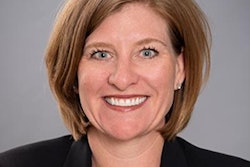
Dental practices were among the businesses hit hardest by the COVID-19 shutdowns, and many dentists took advantage of the Small Business Administration's (SBA) Paycheck Protection Program (PPP) as a result. With states now lifting or loosening restrictions on procedures, you may be focusing your efforts on getting your practice reopened.
Before you get back to full-scale operations, now is the time to prepare for the loan forgiveness portion of your PPP loan. Here are the steps to follow, along with details around the key provisions reflected in the recently passed PPP Flexibility Act (PPPFA).
1. Be sure that you're using PPP funding appropriately
 Mark Schmidt.
Mark Schmidt.The PPP was primarily designed to help dentists cover payroll-related expenses, and the criteria of the forgiveness program reflect that. Some examples of expenditures eligible for forgiveness include the following:
- Employee salary or wages, commissions, cash tips, or similar compensation
- Payment for vacation and parental, family, medical, or sick leave
- Payment required for the provisions of group healthcare benefits, including insurance premiums
- Payment of any retirement benefit
- Payment of state or local tax assessed on the compensation of employees
- Compensation to or income of a sole proprietor or independent contractor up to $100,000 per year
The PPPFA lowers the minimum amount of payroll expenses that can be forgiven to 60%. This means that no more than 40% of funds eligible for forgiveness can be put toward approved nonpayroll costs related to mortgage interest, as well as rent or lease payments and business utility costs. Note that personal protective equipment (PPE) -- a major factor for many dentists reopening their practices -- does not fall under the category of forgivable expenditures.
Another stipulation for forgiveness is that it only applies to funds used within the covered period. The PPPFA changed this from eight weeks to 24 weeks, starting the day that borrowers receive their funds, although practices on weekly or biweekly pay periods can start the covered period on the first day of the pay period following receipt of PPP loan funds. Borrowers who received PPP loans prior to June 5 have the option to use the original eight-week period, if they prefer, while those with loans originated after June 5 will be required to use the 24-week covered period.
The PPPFA extended loan terms from two years to five years for all loans originated after June 5, giving borrowers more time to repay any loan amount not forgiven. Loans originated prior to that date can also be extended from two to five years by mutual agreement between the lender and borrower. Borrowers do not have to make any payments on the unforgiven portion of the loan until the SBA makes a final decision on the forgiveness application. If an application hasn't been filed, then payments begin after 10 months.
2. Organize your documentation
Keep diligent track of any PPP-related documentation, such as paid checks, payroll documentation, relevant receipts, billing statements, etc. You will need to submit these to prove that you used funding appropriately and qualify for forgiveness. Documents should be organized neatly and coherently, as your lender is going to be processing many PPP loan forgiveness applications. The better organized your documentation is, the more easily they will be able to assess your packet and/or reach out to you with specific issues or questions while reviewing.
3. Prepare your application
The SBA recently released a revised full version of the forgiveness application and a new short version (Form 3508EZ).
The EZ application can be used by self-employed individuals, independent contractors, sole proprietors with no other employees, or any other borrower who did not reduce the number of full-time employees during the covered period or did not reduce pay for any employees by more than 25% (full-time employee and salary levels are compared to a prepandemic reference period to determine any reduction). Borrowers who don't meet these criteria must complete the full application.
Borrowers must submit their application and expenditure documentation to their lender to apply for loan forgiveness. From the date of submission, lenders have 60 days to make an approval decision and submit it to the SBA, which then has 90 days to finalize the decision and remit the funds to the lender in the amount of the forgiveness. The lender will notify the borrower of the decision.
There is currently no deadline set for your final forgiveness application, but you will have to make payments on the full loan amount if a forgiveness application has not been filed within 10 months of having received your PPP loan funds.
While completing the forgiveness portion of your PPP loan may seem like a complicated endeavor, it doesn't have to be. By being strategic with your use of funds, detailed in your documentation, and thorough in your application, you can set yourself up to maximize your PPP loan forgiveness.
Mark Schmidt is CEO of Fund-Ex Solutions Group, a nonbank SBA lender and wholly owned subsidiary of Bankers Healthcare Group. For more information, visit fundexsolutions.com.
The comments and observations expressed herein do not necessarily reflect the opinions of DrBicuspid.com, nor should they be construed as an endorsement or admonishment of any particular idea, vendor, or organization.



















